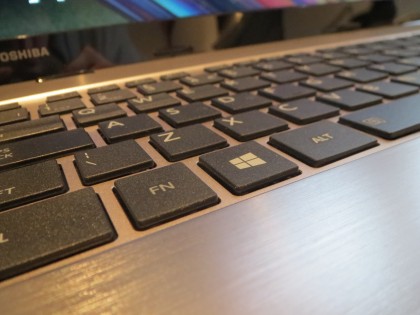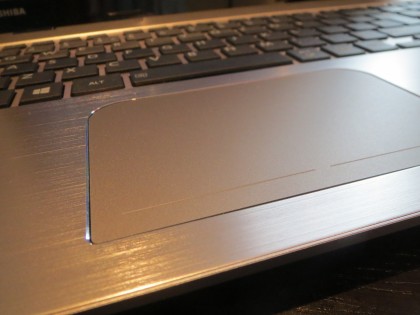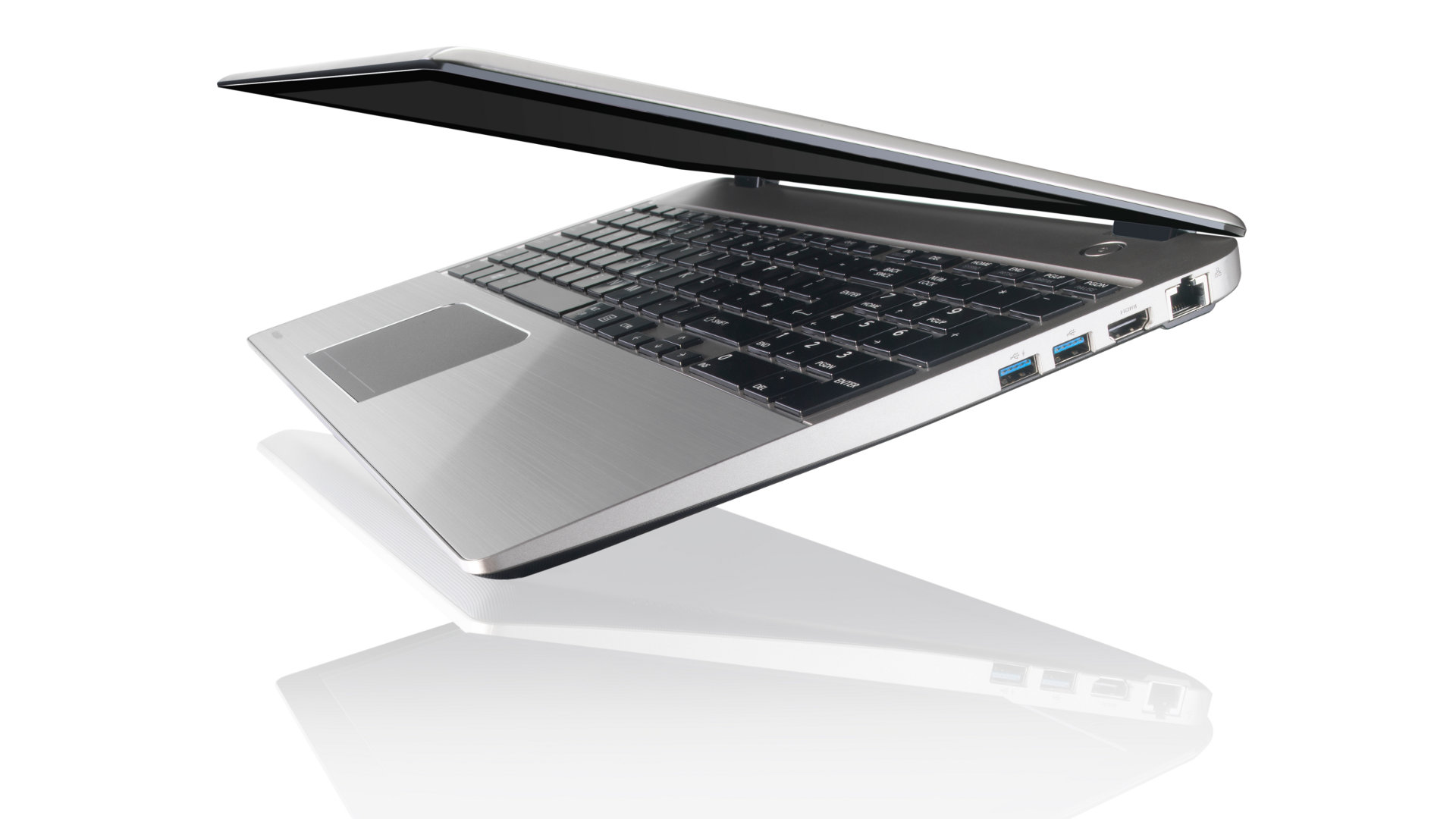Why you can trust TechRadar
3DMark:
Ice Storm: 52142
Cloud Gate: 7503
Fire Strike: 1142
Cinebench:
CPU: 2.37
GPU: 48.41
PCMark 8:
Home score high performance: 3472
Home score power saver, no GPU: 2142
Home battery test, high performance: 3hrs 34mins
Home battery test, power saver: 4hrs 42mins
BioShock Infinite:
Medium, 1,366 x 768: 37fps
High, 1,366 x 768: 29fps
Dirt 3:
High, 1,366 x 768: 54fps
Hard disk:
AS SSD sequential read: 103MB/s
AS SSD sequential write: 78MB/s
The Toshiba's Core i5 processor skipped through Cinebench to a score of 2.37: a little better than the other Toshiba and the AMD A10-powered Lenovo, and a long way ahead of the Samsung – its low-power AMD chip only scored a paltry 0.96.
The M50 was similarly impressive in gaming benchmarks. The Toshiba's score of 52,142 in 3DMark's Ice Storm test beat every other laptop here – the nearest challengers, from Toshiba and Lenovo, scored 37,565 and 44,412.
The M50 backed up this theoretical pace in real-world tests run at its 1,366 x 768 native resolution. The Toshiba hit a playable 37fps in BioShock Infinite's medium settings, and it managed a near-playable 29fps at the game's high quality levels. It then scored an easy 54fps in Dirt 3's high-quality benchmark.
The Toshiba lasted 3 hours 34 minutes in PCMark's Home battery test in high performance mode, with this figure extending to 4 hours 42 minutes when using power saver. That's a decent result that matches the cheaper Samsung Ativ, although it's unable to match the six-hour lifespan of the Toshiba Ultrabook.

The keyboard uses the familiar Scrabble-tile layout, and the Toshiba is wide enough to include a numberpad alongside a sensible layout and plenty of additional function keys.
Quality is good, too; the base is firm, and the keys have a consistent action that lends itself to rapid typing. They're responsive, but if we're quibbling we'd prefer the keys to be a little heavier and have a bit more travel. The Toshiba's action matches the Samsung and Acer machines and easily beats the Lenovo.
The trackpad's two buttons are light, and the pad itself is decorated with a smart textured pattern. It feels rougher than most trackpads, but we like that – it provides extra grip.

The screen's 1,366 x 768 resolution is standard on mid-range and budget machines, but it feels a bit low on 15.6in panels – Windows 8.1's Live tiles look huge, and there's not enough desktop real estate to have two desktop windows open side-by-side.
The Toshiba's screen is non-touch, and it didn't blow us away in tests. The measured brightness level of 222 nits is entirely average and the black level of 0.68 nits is worse. That latter figure proves particularly problematic, as different shades of dark grey at the bottom of the scale just weren't distinguishable on this panel. The contrast ratio of 324:1 is poor too, and contributes to lifeless colour reproduction.
The sRGB gamut coverage level of 56.3% is bad, too. The Toshiba's screen only covered the whole gamut when handling blue shades, and it wasn't far away when rendering yellows, but it fell short across the rest of the range. The screen's blue dominance lends white areas a slight hue and makes the screen feel cold.
The Toshiba's screen is an undoubted budget panel, and the lack of quality and low resolution means it's only suitable for web browsing, basic work and gameplay – 1080p films will suffer thanks to a lack of pixels and the lack of clarity in darker shades, and it's just not got the colour accuracy to handle photo or video editing. Sadly, none of this machine's rivals have better screens.
Media performance is further hampered by mediocre speakers. There's not enough volume to fill much beyond a small bedroom, and bass is barely present. The top-end is tinny and dominant, and it buries the treble – high-hats dominated our test tunes to an uncomfortable level.
Mike has worked as a technology journalist for more than a decade and has written for most of the UK’s big technology titles alongside numerous global outlets. He loves PCs, laptops and any new hardware, and covers everything from the latest business trends to high-end gaming gear.
